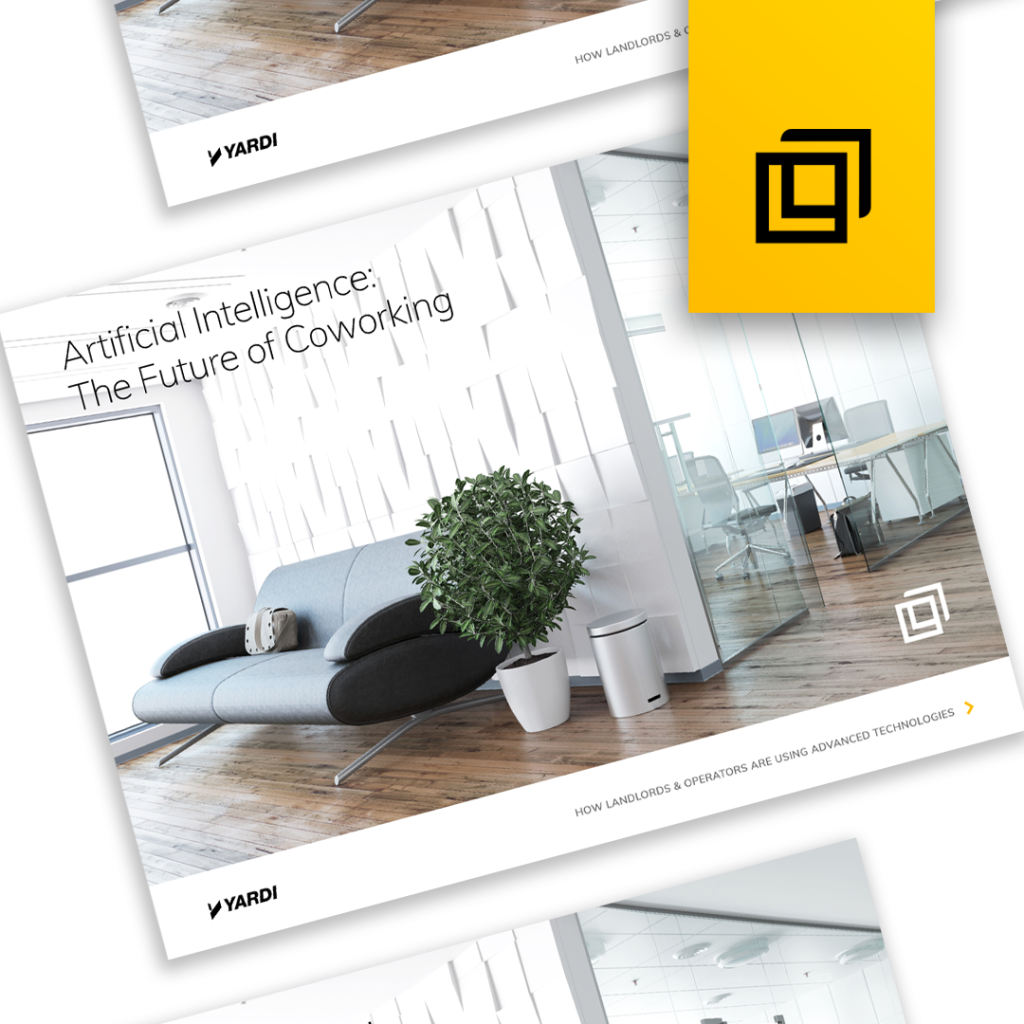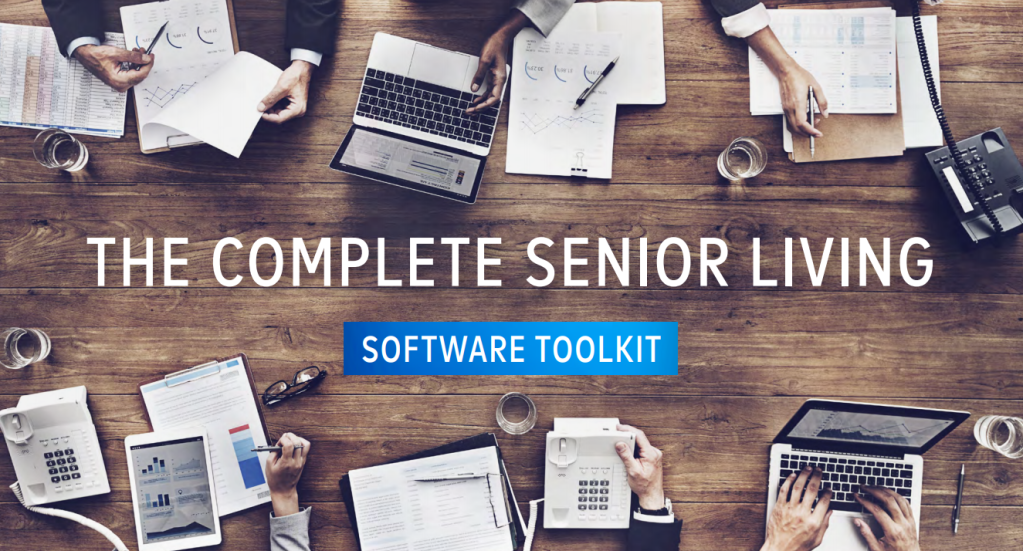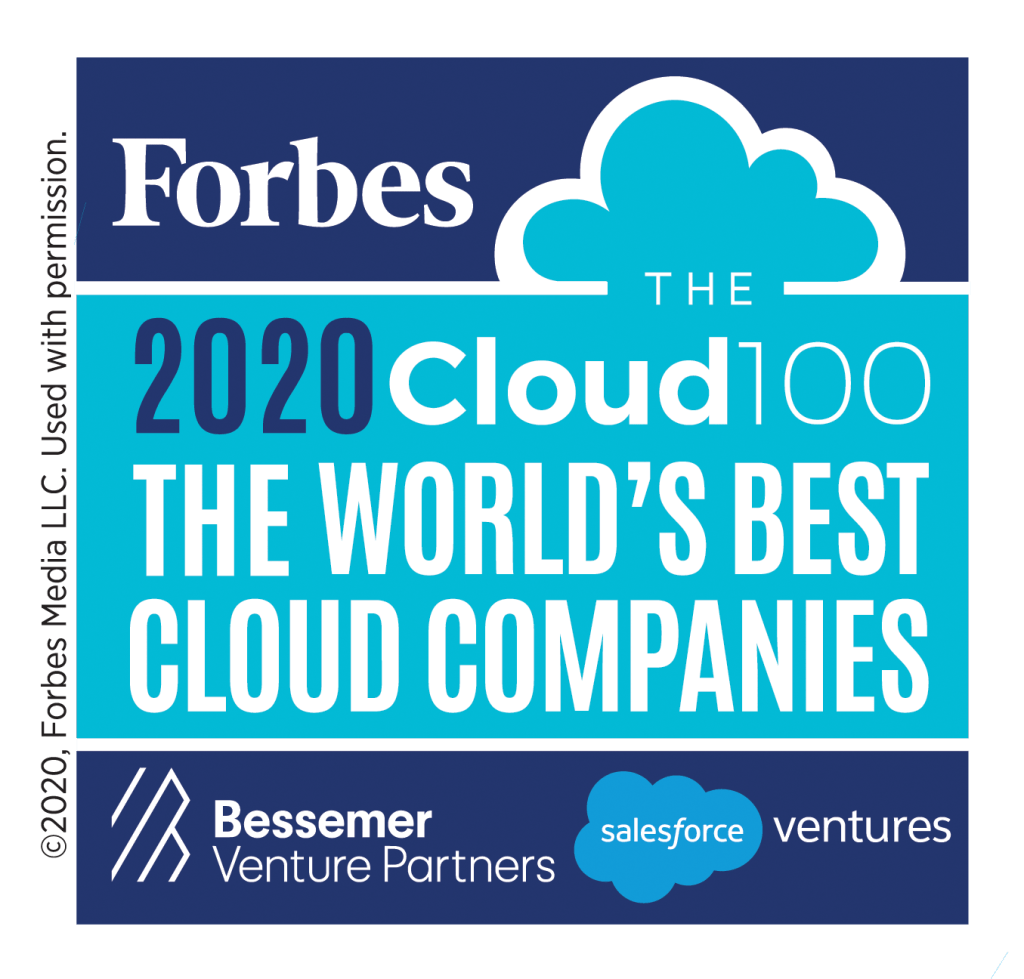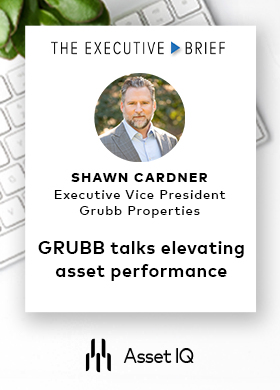An ongoing series of research reports from the U.S. Environmental Protection Agency (EPA) details information from the hundreds of thousands of buildings who use ENERGY STAR® Portfolio Manager to track energy usage. The latest report focuses on renewable energy and trends in energy metering and efficiency tracking. Onsite renewable energy systems The report studies data from over 260,000 properties, determining that less than 1% (2,447 properties) are currently generating onsite renewable energy. However, even with this low total, the use of onsite renewables has increased ten-fold in the last decade. Among the most common property types who do generate renewable energy are retail stores, K-12 schools and offices. Schools and worship facilities account for the largest number as a percentage of their total properties, still only representing 2.4% each. By comparison, only half a percent of multifamily housing properties have implemented renewable systems. Where are these systems most commonly found? According to the study, California leads the way by a wide margin with nearly 1,000 properties. That number represents more than the next 10 highest states combined. Because the source energy conversion factor is lower for onsite renewable energy, these properties have higher ENERGY STAR scores by a significant margin compared to all properties (74 to 59). Data also shows that 55% of these buildings meet less than a quarter of their electrical consumption from onsite renewables. Metering challenges and considerations There are three primary types of meters that customers use, determined by local utility company standards and building electrical systems. The report dives into the types of meters, what information they do or do not provide and how this impacts energy benchmarking and efficiency goals. Net meters spin forward or backward showing net consumption of power, but do not tell you what was imported or exported. Bi-directional meters tell you how much energy was imported and how much renewable energy was exported. The least common, dual meters have two devices, one to measure import and another for export. The main billing issue, as described in the study, is that only reporting net consumption makes it challenging to benchmark energy performance. To assess this accurately, you need all energy use, regardless of source. Portfolio Manager accurately incorporates onsite renewables into efficiency calculations. Developers may be willing to retrofit older meters with newer versions in order to capture renewable energy generated onsite exported back to the grid and the amount of grid energy sent to the building. The report goes into further detail about renewable energy certificates, inaccurate billing and metering practices, and thoroughly explains the flow chart connecting energy, meter and property. While the total number of buildings reporting onsite renewable energy continues to grow, it still represents a fraction of total properties. Data will become more available to customers as more meters support accurate measurement of onsite renewable energy. Until then, it’s hard to paint a detailed picture of efficiency and even harder to invest in a mix of strategies to achieve great energy use...
Realcomm | IBcon
Yardi Sponsors Hybrid Event
Yardi is proud to be the Diamond Plus Elite Sponsor of the first Realcomm | IBcon hybrid conference. Due to the unique and challenging circumstances this year, the event will begin October 26 in a virtual setting with in-person sessions starting October 28 at the Marriott Gaylord Rockies Resort in Aurora, Colo. This premier event hosts hundreds of commercial and corporate real estate executives to discuss technology, automation and innovation. As part of the event, Yardi will have numerous speaking opportunities: Monday, October 26 Senior director Arjun Rao will host a CEO/COO roundtable discussion titled “The Future of Office Leasing: Challenges and Opportunities Explored,” focusing on leasing, demand for space in urban and suburban markets, as well as key factors for restructuring leases. A CIO roundtable focused on the outlook for private equity and the impact of technology on big spend will be hosted by Rob Teel, senior vice president of global solutions. Teel will also participate in a Realcomm LIVE interview to discuss current trends in the real estate industry. Founder and president Anant Yardi will join global thought leaders sharing their visions for the future of real estate technology, the economy and the workplace experience beyond the pandemic. Tuesday, October 27 Anant Yardi will join a panel titled “Industry Leaders Weigh in on Surviving and Thriving in Uncertain Times” to discuss how the real estate industry is trying to define the new normal. Wednesday, October 28 Brian Sutherland, industry principal for commercial, will also take part in a Realcomm LIVE interview session to discuss Yardi’s position in commercial real estate during the pandemic. Check out the full conference agenda, which will be updated continuously as more speakers and sessions are added. Visit Realcomm for more information or to register for the...
Yardi Skilled Nursing...
New for Senior Living
Yardi created the Yardi Senior Living Suite to encompass every element of senior housing management within a single platform, from sales, marketing and care management to payments, family communication and medication administration. The suite helps facility operators grow their occupancy, deliver quality care and lower total costs of ownership. A recent addition brings even more key operations into the suite. Yardi Skilled Nursing is a mobile solution that helps senior living staff members deliver care and document their actions more efficiently. Yardi Skilled Nursing saves time in resident assessment, charting and reporting by sending resident data from the point of care directly into a standardized patient health assessment repository known as the MDS. This streamlined documentation process lets staff members spend more time on resident care instead of entering and validating data. The solution also fortifies compliance by ensuring operators are current on frequently changing regulations and automatically checking for fatal errors, missed fields and inconsistencies. User logs, change reasons and up-to-date chart data establish a clear audit trail. Advanced reporting, clinical key performance indicators and financial measures enable full oversight of care services. Yardi Skilled Nursing also delivers value to senior living facility operators by: Reducing manual data entry errors with automatic pre-population of MDS with information from previous assessments Providing a user-friendly interface that helps lighten staff workloads and improve productivity Streamlining government reimbursements with simplified, error-free claims management Delivering full access to real-time clinical information for staff across the business “Staff members can devote their energies to resident care because all electronic point-of-care charting is readily available on any mobile device,” said Ray Elliott, vice president of senior living for Yardi. “That benefit combines with real-time availability of full service information to give facility operators the means to improve health outcomes,...
Student Housing’s Strength
Sector shows resiliency, says Yardi Matrix
Despite massive disruption to in-person learning protocols, demand for off-campus, purpose-built student housing remains strong, according to a webinar and a new bulletin from Yardi Matrix. “College students don’t want to live at home. And their parents seem quite amenable, if financial circumstances allow it, for them not to live at home,” said Jeff Adler, vice president of Yardi Matrix, during the webinar. “There’s been a tremendous amount of noise around the sector, but as it relates to the financial performance of off-campus student housing, it is largely unaffected.” The one key factor is that college or university the students are attending must be offering classes in some capacity, even if they are all online. Need for greater social distance between students in on-campus dormitories have been another helpful nudge. “As long as the school is open somehow, for the dedicated off-campus student housing inventory, (the education format) doesn’t matter,” Adler said. “The off-campus student housing industry has shown itself to be really resilient.” Development pipelines also remain strong, with only two planned projects nationwide falling off the radar in the last quarter. Enrollment trends have favored public universities rather than private schools, indicating that students may be looking for more affordable education alternatives given current economic uncertainty. And off-campus housing options provide a more continuous housing option than on-campus dorms, which are more likely to be subject to closures or status changes. Though college enrollment from international students is down due to travel restrictions, those spots in off-campus housing seem to thus far have been backfilled by American students. One caveat is that these are students whose parents’ economic fortunes have likely not been disrupted by the pandemic. And even if no vaccine is available in spring 2021 as expected, purpose-built student housing is expected to continue to do well. “Even if everything goes horribly wrong (with vaccine development), the fact that this year was as good as it was indicates that as long as the school is open in some fashion, it’s a non-event for the off-campus student housing sector,” Adler said. For the 200 colleges and universities the Matrix team analyzed, preleasing of purpose-built student housing was just 3 percent behind that of 2019. “While demand has been volatile on a university-by-university basis, the willingness and desire for people to congregate near their school will likely help the student housing sector steer through these uncertain times,” states the analysis. Preview new technology for student housing providers at the NMHC/InterFace Student Housing Conference, a virtual event taking place Oct. 19-22. Visit the virtual booth to see how RentCafe Student and Yardi Matrix Student will graduate your leasing and management...
Simplify Resident Management
Ontario Social Housing Tenant Portals
The events of the past several months necessitated major shifts in the housing industry. The pandemic made it clear—if there had been any doubts—that the future of efficient, healthy social housing relies on integrated technology. When it comes to tenant files, bypassing physical touch points reduces exposure risk while increasing process efficacy. The latter benefit carries with social housing providers long after the pandemic has faded from conversation. Integrated leasing and property management technology expedites daily processes by digitizing, streamlining and automating tasks. One of the first steps towards greater efficiency begins with tenant portals. When resident portals integrate with back-end property management technology, the results are improved safety, maximized compliance and more accurate reporting. Ontario housing receive a mandatory tech makeover Leasing social housing units has always been an elaborate process: paper applications, manual reviews, in-person interviews, and seemingly endless data entry were a few trademarks of the process before online portals. Redundant and tedious tasks can cause staff burnout, costly errors and inconsistent tenant experiences. The pandemic forced social housing to evolve. Social housing management has been transformed by social distancing protocols and health guidelines. The transformation is changing office processes and the work environment. Months into the pandemic, an industry that has been accustomed to incremental change is adapting online leasing tools at a rapid pace. Technology, such as online tenant portals, comes with a host of benefits for social housing providers and tenants. 5 Benefits of a tenant portal for housing providers Tenant portals are tools of empowerment. Staff members benefit from online portals in five major ways: Save staff time with online and automated services. Online portals make data management easier for staff. Tenants enter their own data which is seamlessly integrated with back-end software. This reduces data entry for staff, minimizes errors and eliminates redundancy. Simplify resident management with user portals. Staff experience significantly fewer phone calls and in-person meetings when they can conduct rent geared to income (RGI) reviews and resident management tasks online. There is also less downtime between correspondences: no waiting on snail mail or returning calls. Improve financial management. Accurate reporting is crucial to long-term success. Online portals facilitate faster reporting. Housing providers can leverage software that supports provincial, municipal, board and internal reporting requirements. Staff can also create custom reports from any web-enabled device. Housing providers can also generate more complete rent collection and rent geared to income (RGI) reviews with user-submitted data. Increase data accuracy and accessibility. Physical documents are stored on premises and not accessible in remote work environments. Online portals facilitate telecommuting by storing resident information in a secure database that staff can access in the leasing office or their remote work locations. Enjoy a simple, single sign-in. Managing multiple software products requires multiple credentials for staff. Staff must manually rekey and update renter profile information in multiple locations if errors are made or changes are necessary. With an integrated solution complete with portals, tenants manage their own personal information. When staff must intervene, there is a single sign in and greater consistency throughout the leasing and RGI review process. Through the gained efficiencies of user portals, staff members are empowered to shift their focus from tedious tasks to building relationships and offering stellar services. Top 3 benefits of a tenant portal for tenants Tenant portals also empower residents. Users can safely and easily complete tasks with three added benefits: Offer convenience and flexibility. Tenants can gain 24/7 access via web browsers to their customizable profiles. A simple, self-service data entry process allows them to update personal information, complete forms and review their status. With a website, tenants can interact with staff without the restrictions of leasing office hours. They can also communicate with staff and receive responses via SMS/text messaging that abide by CASL requirements. Increase accuracy for annual or interim reviews. Residents can log in at their convenience and update RGI information. They...
Water Wins
Tap the Savings
The cost of water can be deceptively low — it doesn’t include the energy expenses of pumping and heating the water. When you evaluate water and energy efficiency together, you’re in a better position to maximize resource and cost savings. Multifamily companies can get some quick wins with minimal effort and no (or low) capital expenditure. All you need to do is make some changes to operations and maintenance practices along with minor retrofits or replacements as needed. The Environmental Protection Agency’s (EPA) WaterSense program recently shared strategies to save energy and water in the webinar “Reducing Costs with Quick Water Wins.” WaterSense is a voluntary program launched by the EPA in 2006 that provides a simple way to identify water-efficient products, programs and practices. In the webinar, the EPA’s Tara O’Hare highlighted the connection between water and energy, often referred to as the energy-water nexus, since every gallon of water has an energy footprint for pumping, moving, heating and treating water. To keep costs low, WaterSense offers the following tips: Review all bills for accuracy Check facility rate class and water meter size on bills Work with your local utility to correct any problems Identify leaks and waste O’Hare said that energy and water leaks linked to continuously running water comprise approximately six percent of water use and that potential financial losses from water such as a drip irrigation malfunction or an unattended water hose at night can amount to $4,300 or $16,000 per year, respectively. How can you make sure this doesn’t happen at your property? Conduct a walk-through to identify leaks (look for puddles and drips) and ask for the vigilance of employees and tenants to help identify leak and waste indicators as soon as they occur. Follow best practices You’ve...
Better P2P Process
Senior Living’s Silverado
Employing disconnected procurement processes eats up staff members’ valuable time, fritters away resources and creates opportunities for runaway spending. Managers of senior living communities need to direct their resources toward productive activities. So why not find a better way to purchase, approve and pay for goods and services? That was the purpose of a recent webinar moderated by Senior Living Foresight and featuring Yardi Procure to Pay manager Kim Hensley along with Carmin Tomassi, vice president controller for Silverado, an Irvine, Calif.-based assisted living, home care and hospice care provider. The traditional approach to purchasing goods and services involved manually scanning data and routing paper around for approvals. The lack of formal workflows and repeated manual tasks obscured budget visibility, duplicated payments, and created opportunities for duplicate payments and other errors. The sheer volume of invoices to be processed – up to 35,000 per year for a typical user of Yardi PayScan – made the process even more daunting. Silverado offers an example of a senior living community operator overcoming the flaws inherent in manual procurement processing. Tomassi recounted how Silverado reduced its payables reversed rate to 0.56%, versus the industry average of 1.8%, and its checks voided rate to 0.43%, versus 2.1% for the industry, by automating the process end to end with Yardi Procure to Pay. The system, he said, produced “a night-and-day difference from where we were just four years ago. Now we have one automated system paying all our bills. All approvals are electronic, we have vendors set up in workflows, and we have centralized a big chunk of the business function, with better results. It’s been real win for us.” Silverado uses Yardi Procure to Pay to move its purchase orders through the approval process electronically, with customized approval...
ENERGY STAR Awards
Wellspring of Value
In March, the U.S. Environmental Protection Agency awarded Yardi one of 191 ENERGY STAR® Awards for 2020 for national leadership in creating cost-saving energy efficient solutions. The company earned its second consecutive ENERGY STAR Partner of the Year Award, EPA’s highest level of recognition, for helping clients benchmark energy and water usage, widely promoting ENERGY STAR resources and earning ENERGY STAR certification for its corporate headquarters. And what did the other 190 award winners achieve? Their initiatives show that organizations in every sector of the economy – whether a real estate services leader, industry trade association, toothpaste manufacturer, baked goods pacesetter, top-tier university, venerable automobile manufacturer or aerospace behemoth – can find ways to protect the environment and save energy. Here’s a sampling of the most recent ENERGY STAR Award winners: Global commercial real estate services provider Cushman & Wakefield gave its tenants more than 20 presentations on implementing energy efficient practices and using ENERGY STAR-certified equipment. The company also trained vendors, brokers and building contractors in energy management goals and in using ENERGY STAR as a market differentiator. Cushman & Wakefield achieved ENERGY STAR certification for 130 buildings in 2019. BOMA International, a trade association for commercial real estate professionals, completed Year 2 of its W2 Challenge, an initiative to benchmark water use and waste output that was built with the support of a grant from Yardi. The organization also continued its ENERGY STAR-related education and recognition programs in 2019 and prominently featured ENERGY STAR in its videos, industry conferences, magazine, e-newsletters, webinars and social media. Bimbo Bakeries USA, whose brands include Thomas’, Sara Lee, Arnold and Entenmann’s, reduced energy use by 2.3% from the previous year and became the first major baking company to purchase renewable energy for 100% of its electricity...
Power Plays
Energy Efficiency Day 2020
While energy efficiency is important every day of the year in any economy, 2020 is presenting unique challenges along with big opportunities for companies and individuals alike and now is a great time for everyone to take control of energy use and utility costs. Using energy efficiently is the simplest way to lower utility bills, improve air quality and reduce environmental impact as part of a larger concerted effort. Driven by the mission to save money, cut pollution and create jobs, Energy Efficiency Day on October 7, 2020, is a collaboration of dozens of energy efficiency advocacy groups around the U.S., including the American Council for an Energy-Efficient Economy (ACEEE), Advanced Energy Economy, Alliance to Save Energy, Natural Resources Defense Council, the Regional Energy Efficiency Organizations and many others. As we come together for the fifth annual Energy Efficiency Day, the event website offers some great tips to deal with pandemic-related utility costs now and through the summer. A costly lockdown While working remotely and spending more time at home is helping to stop the spread of COVID-19, it’s not helping most people’s wallets. For areas in a home that need improvement to increase energy efficiency, workers usually need inside access. During a pandemic, that kind of exposure carries serious safety concerns. If you’re not ready to let utility pros into your home, what can you do? Consider a virtual energy audit. Check with your local utility companies to find out if they offer this convenience in your area. There are also some things you can do yourself to increase energy efficiency and stop the waste. Following are a few highlights and takeaways from the article Pandemic Hurts Efficiency Jobs But You Can Still Make Energy-Saving Upgrades. Seal the gaps Check around windows and doors as well as mail slots, electrical outlets and window-mounted AC units. Wherever you find a crack or gap, seal it with caulk or weather stripping. Replace filters Keeping your furnace and air conditioner filter clean will ensure they aren’t working harder than they need to — which saves you money, lowers emissions and extends the life of your equipment. Lighten up your bills Switch your bulbs to LEDs, which use up to 90% less energy to deliver the same amount of light as incandescent bulbs — and they last up to 25 times longer. Save water With a high efficiency showerhead, you can save more the 2,000 gallons of water per year, most of which is hot water, so you also get the savings on heating. While you’re at it, install an aerator in your kitchen sink — a pressure compensating model ensures plenty of flow power while it reduces water use. Want to learn more? Get the scoop on ways to save on your next energy bill for tips including ENERGY STAR® appliances and how you can take part in Energy Efficiency Day. For property managers and owners looking for ways to gain control over energy consumption and reduce costs, join a free webinar on energy solutions brought to you by Yardi, named an ENERGY STAR Partner of the...
Argentum Illuminates
Senior Living Management
The annual Argentum Senior Living Executive Conference Argentum wasn’t live with thousands in attendance as is usually the case, but it still lived up to its legacy as a major event in the professionally managed senior living community industry. Held in September and hosted by a major national trade association, Argentum offered 30 hours of programming over three days. Leaders from Life Care Services, Mather, Eclipse Senior Living, Heritage Communities and other providers offered tips on such timely topics as shifting from survival mode to a sales-oriented environment, giving buyers a seamless journey (“omnichannel marketing”), protecting health data from cyberattacks and staying ahead of COVID-19. Besides sponsoring registration for the event, Yardi’s principal contribution was hosting a virtual session that addressed how advanced business intelligence technology can drive informed decision-making. Senior living executives J.R. Southerland and Richard Nix focused on one of Yardi’s new contributions to efficient senior living management – Yardi Senior IQ, a BI solution designed for senior living that compiles portfolio-wide information. Southerland and Nix explained how executives can use Yardi Senior IQ to execute benchmarking, elevate reporting to investors, board members and others, and deliver details on everything from unit availability to current market rates. Please contact us if you would like to know more about the business intelligence presentation or the Argentum conference in...
Future of Coworking
AI & Internet of Things
One of the most significant trends in coworking and throughout the commercial real estate industry, is the advancement of uses for Artificial Intelligence (AI) and the Internet of Things (IoT). For managers and landlords, it leads to improvements in operational simplicity, features that increase revenue and reduce long-term costs with short-term investment. In our newest eBook, we analyze how AI and the IoT impact shared workspaces today and moving forward. We look at the most prevalent applications of advanced technologies in coworking then examine data on AI implementation and how it has evolved quickly over the past few years. Victor Vasev, Yardi senior director of coworking, explains how the Yardi Kube platform is using AI and IoT to help operators facilitate day-to-day business and adhere to social distancing guidelines for members. Finally, what is next for AI? Our eBook concludes with a look at the next steps for AI in the commercial and coworking sectors. Introduction to AI For the last decade, there has been consistent and rapid growth of coworking which has run parallel to the increase in the uses and potential for AI and IoT. Just about every aspect of our lives – comfort at home, entertainment, energy efficiency, transportation and now social distancing – have been altered by smart technology. The definitions of AI and IoT are intertwined, yet unique. The Internet of Things are internet-enabled devices, connected to collect and share data. Artificial Intelligence means your software gathers data, processes information and analyzes or makes predictions based off that data. In short, IoT is about connection and performing tasks, like requesting that Alexa turn down the temperature on your Nest thermostat. Artificial Intelligence goes beyond what human analysis is capable of to draw conclusions from data, like the Nest itself...
Pandemic-Inspired
Tech Innovations
“To effect change, there must be a stimulation of a magnitude that means companies cannot do anything but make bold decisions to survive. COVID-19 is that magnitude.” — Stuart Carlaw, chief research officer for technology analysis firm ABI Research Amsterdam-based consumer trend firms TrendWatching and Business of Purpose created COVID Innovations to track technology innovations arising from the pandemic. Here’s a summary of some of the projects listed on the site. Japanese start-up Donut Robotics has devised a smart mask called C-Mask. It can be worn over fabric-based masks and connects to an app via Bluetooth, enabling it to transcribe speech to text messages that are sent via the user’s smartphone. It can also translate from Japanese into eight other languages. After debuting C-Mask in Japan in September, Donut Robotics is eyeing the U.S., Europe and China as potential markets. Meanwhile, Detroit-based Redcliffe Medical is marketing its own mask design. LEAF is a transparent device composed of medical-grade silicone that promotes safety while keeping the wearer’s identity, lip movements and facial expressions visible. It’s the first FDA-registered mask with N99-standard air filtering abilities and includes an antifogging feature. Can ultraviolet light provide a line of defense against the coronavirus in warehouses, schools, restaurants, supermarkets, offices and other venues? MIT thinks so and created a robot designed to disinfect spaces by emitting UV light. It’s already been used successfully at the Greater Boston Food Bank. A 3D camera helps the device navigate around obstacles while a 2D device measures distances by illuminating targets with light. Another robot, StrikeForce, comes from XENEX Disinfection Systems in San Antonio, which claims its invention can destroy the novel coronavirus in 2 minutes. The company’s LightStrike Germ-Zapping Robots (a trademarked name) uses a xenon lamp to generate bursts of high intensity ultraviolet light. Restaurants, car dealerships, hotels, office buildings and gyms are among the potential candidates for StrikeForce, which is available on a limited basis in Texas, according to COVID Innovations in June. India’s TechMax hopes to ease workers’ transition back to multi-story office environments with its Sparshless solution, which allows touchless elevator unit operations. Summoning the elevator is as simple as placing your hand near a reader. Once inside, just point your finger at a button from about a half-inch to three-quarters of an inch away. Many people have stayed true to their favorite eateries with pick-up and take-out orders. Is it possible to create a similarly contactless dine-in experience? Pasadena, Calif.-based FreshBytes is one tech firm that thinks so. In June, the online ordering system provider, which claims to be the only company that allows restaurants to update their dine-in menus directly from a mobile phone, announced a system that lets customers scan a QR device to view the menu, order and pay directly from a mobile device, with the guest order automatically printed in the kitchen. There’s no exchange of pens, paper or payment cards, and guest turnover is faster. Another California enterprise technology platform provider, Presto, says its free Contactless Dining Kit received orders from more than 5,000 restaurants in five continents within two weeks of its launch in late May. And in Europe, British engineering firm Arup designed modular “parklets,” outdoor seating areas made from hardwood and screened from each other by plants and acrylic glass that let restaurant patrons enjoy onsite dining while maintaining social distances. They’re part of a “Liverpool Without Walls” project designed to help that city’s restaurants reopen. The first parklet was opened in July. Microsoft responded to spiraling global unemployment with a skills initiative designed to bring digital skill learning opportunities to 25 million people by the end of the year. The software giant will leverage its LinkedIn and GitHub resources to identify in-demand jobs and the skills needed for them, provide free access to learning content, and deliver low-cost certifications and free job-seeking tools. Yardi responded to the pandemic with its own set of dedicated...
Simplifying Compliance...
Chris Voss Talks Yardi RightSource
How do you reduce the costs of compliance such that affordable housing properties are more attractive to investors, easier for residents to find and qualify for, and less expensive to manage? That’s a question Chris Voss has spent the better part of 20 years answering, and he may just be on to the solution. Chris is Yardi’s vice president of affordable housing and PHA Sales and is the founder or RightSource, the newest addition to the Yardi family. A natural entrepreneur, Chris attended college on the east coast and focused his studies on economics. While there, Chris did some web development work for members of congress, an experience that helped grow his familiarity with emerging online technology. After college, Chris was hired by a consulting firm in Washington, D.C. that supported affordable housing developers and operators. Like many affordable housing professionals, Chris found himself unexpectedly in the industry, but soon realized a passion for its mission and processes. “I joke that growing up I wanted to be a doctor right up to the point that I realized I probably wasn’t patient enough to complete four years of medical school. However, my career does give me some of the experience I was looking for. I’m able to help clients realize their long-term operational goals by diagnosing their challenges and solving them with improvements to technology, processes, and people. So, while I’ve come to terms with not actually becoming a doctor, I have the sense of purpose and fulfilment of helping affordable housing organizations operate with a greater sense of health,” says Voss. The sole focus of the consulting firm Chris worked for in the early 2000’s was support of clients implementing Yardi Voyager. Chris describes his consulting career as a deep dive into affordable housing...
Building Better
New Bricks, New Possibilities
Bricks are a burden. For more than 5,000 years, we’ve used the same inefficient, environmentally destructive products to build homes, businesses and institutions. Their cumulative effects left landscapes barren, air polluted and contributed to warmer climates. Innovation is in place for smarter bricks—if the industry is ready to get onboard. The life of bad bricks Clay bricks are respected for their durability and simplicity. Unfortunately, the benefits stop there. Mining clay requires stripping landscapes of their plants, trees and topsoil. The sublayers of soil and stone are inhospitable to plant life, leaving bald scars on the landscape for at least a decade. Once mined, raw materials are transported to kilns where fossil fuels bake bricks at 2,280°F. Carbon emissions continue to climb as the finished product makes its way to distributors and work sites. At the end of their lives, companies demolish bricks and ship them off to landfills. Except for very few historic sites, bricks are not recycled or repurposed: to do so, workers would need to scrape off old mortar by hand. But more importantly, the industry does not have an efficient way to test the integrity of reclaimed material. It all becomes trash. Geological damage, long-term environmental concerns and poor disposal practices make our old bricks our new bad news. Fortunately, a team of innovators at Geotechnical and Geoenvironmental Engineering at Scotland’s Heriot-Watt University has created better bricks that can usher the industry into the future. Maybe. Stepping out on a limb (with the others) Professor Gabriela Medero set out to reinvent the brick. She knew that sustainable building would require more sustainable building materials. The outdated practice of brick making desperately needed modernization. “It’s the exploitation of natural resources, it’s the… massive volumes of waste, together with the massive volumes...
Clear, Concise, Conscious
Remote Work Communication Tips
Though working from home is novel in many ways, it has its disadvantages: you may feel disconnected from your peers, out of the loop with leadership and frustrated that you don’t have access to all the tools you’d have at the office. Add those concerns on top of a challenging work-life balance and we’ve got a recipe for short tempers, cluttered minds and poor communication. Yet in the age of social distancing, strong communication skills reassert their essential value. If you find that your team is struggling to stay amicable, focused and encouraged, consider the three Cs: clear, concise and conscious communication. Clear intention First, identify what you want to accomplish. Geoffrey James, a specialist in sales communications at Sales Source, emphasizes that all communication has intention. “Before you initiate any communication, ask yourself, ‘What am I trying to accomplish?’ Understanding and focusing on the ‘why’ allows you to avoid side issues and ratholes that might otherwise obscure the situation.” Clear communication also encourages us to be specific and detailed in the first point of contact. This can minimize confusion and time-consuming follow-ups. Avoid assumptions, state your objective and provide your contact with the necessary information or resources needed to fulfill the objective. Think you’re overdoing it on the details? If you’re introducing an unfamiliar topic or content, you’re probably not. A Stanford University study reveals that speakers grossly overestimate how much listeners understand. When you’re dealing with a new project or concept, it may be essential to overcommunicate. Concise language While it is important to give adequate details, it is equally important to be concise. There are no hard and fast rules for this delicate balance. The amount of detail needed will depend on your contact’s familiarity with the content. But there are steps that you can take to be efficient with your communication. In writing, it is especially important to avoid hyperbole, downplaying serious situations and sarcasm. Written communication doesn’t include tone of voice, facial expression and body language to give context to what you’re saying. Any figurative language increase the chances of miscommunication. Additionally, communication specialist Deep Patel recommends focusing on communication that will garner respect rather than laughs. “It can be tempting to communicate with others in a lighthearted way,” says Patel. “But remember that the most successful communicators are those who have earned respect rather than laughs.” Conscious approach There are entire schools of study around conscious communication. To simplify a few concepts, keep two basic points in mind: no one can read your mind, and everyone is fighting personal battles. No one knows what you need unless you clearly and concisely explain it to them. When possible, empower them with resources to fulfill the objective correctly the first time around. You also cannot read their minds, so avoid making assumptions about their intentions, intelligence or character. Secondly, everyone is trying to adjust to these turbulent times. Financial uncertainty, health concerns, social injustice, longing for absent loved ones and frustrations within the household are just a few issues that contribute to irregular or unfavorable behavior. Keep that in mind when communicating with others. Proceed with kindness, compassion, empathy and patience. Undoubtedly, even the best attempts at conscious communication can fail. It’s important to learn what went wrong and address it before relationships and work suffer. Take responsibility for your feelings and identify what exchange triggered the upset, advises The Chopra Center. When applicable, note what you did not receive from the exchange and then ask for what you want. “The key principle of conscious communication is making it as easy as possible for another person to meet your need by asking for the specific behavior that will fulfill it,” advises Chopra. “When people feel vulnerable, they commonly compensate by becoming demanding and threatening, believing that forcefulness will increase the likelihood of getting what they want. This approach often has the opposite effect. A...
Software for Senior Living
A Provider Toolkit
Business software is a big category. One so big that there are almost too many options to realistically consider. Take marketing for example, which already has more than 8,000 solutions in nearly 50 distinct areas, the sheer scope of which is obvious from just a glance at the popular marketing technology landscape. Fortunately, when it comes to senior living, the picture isn’t nearly as staggering. Sure, you could choose one of the 7,000 marketing solutions for your community, and it may do the job. Or you could pick from a much smaller list of solutions that were designed specifically for senior living. Software developers have spent decades in the industry working directly with communities to build products customized to their unique housing and care needs. That said, the software market for senior living is growing in step with the industry as a whole. New innovations and features are routinely released, while entirely new products are entering the field. Digital leases, resident portals, online services, mobile charting — you get the idea. Things are changing. Your guide to senior living software This software transformation is likely a big reason why 83% of senior living providers feel that they’ve underinvested in technology. So what kinds of senior living software are available now? And what should you have? We’ve created a new ebook to tackle those questions for you. The Complete Senior Living Software Toolkit breaks down each software type you can find in a modern community, explaining how it helps and highlighting the important features. That way, you can easily flip through the ebook for tools you may not have, learn a bit about their advantages and decide for yourself if it’s something that would work for your staff and residents. Essential software for senior living providers In the ebook, we group the senior living software categories by level of value. There are options that take your community above and beyond but aren’t crucial to running things. And then there are the solutions that every senior living organization should consider adopting. Here’s a quick preview of the first chapter on the most important software for senior living. Property management & accounting – The core financial software that handles the back-office business tasks. Commonly includes a general ledger, resident billing and payment processing. Customer relationship management – Where your sales and marketing team work to grow the community. Key features are lead tracking, activity calendars and campaign management. Electronic health records – The efficient, modern-day answer to paper-based resident records for your caregivers. Look for health assessments, incident tracking and mobile charting. Be sure to check out the full ebook to learn more about the best software for senior living...
Surviving + Thriving
Self Storage Sector Stays Resilient
During every Yardi Matrix webinar, vice president and presenter Jeff Adler shares the big picture of current economic conditions and conundrums – also known as the Yardi Matrix House View. Here’s how the view is looking from the Matrix vantage point these days: “We had a deep recession. We’re in the middle of a recovery. That recovery is likely to be choppy,” summarized Adler to close out Thursday’s Matrix update on the self storage sector. A recording of the presentation is now available, and you can view that here. But for those invested or interested in the self storage market, the seas are not looking quite so rough. Of all commercial real estate sectors, storage had a brief negative impact from COVID-19’s rise in the U.S., and then quickly recovered. “Storage is actually doing quite well,” said Chris Nebenzahl, editorial director for Yardi Matrix. “The demand for storage has been consistent and is stronger than some of the other asset classes in commercial real estate.” Key factors for the sector’s resiliency include: Relocations and population migration. Americans are leaving congested big cities like New York and Los Angeles for second-tier markets where they have more space. Residential volatility. For example, college students have faced ever-changing mandates about whether they would resume classes in person and online, prompting quick moves that often involve a need for storage. Economic hardship. Job losses for millions of Americans are contributing to relocations and downsizing. According to a Pew Research Center Survey, roughly one in five U.S. adults say they have either changed their residence due to the pandemic or know someone who did. The proof of sustained demand for storage is in the street rates, particularly for the non-climate-controlled category. Month-over-month rates reported for August showed that national...
Forbes Cloud 100
Yardi Makes List for 5th Year
Global real estate technology provider Yardi has been named for the fifth time to the Forbes Cloud 100, the definitive list of the top 100 private cloud companies in the world. Yardi was a member of the inaugural Cloud 100 in 2016, landed at No. 30 for 2019, and is No. 34 this year. “We’re honored that Forbes has recognized Yardi yet again for our industry-leading cloud solutions,” said Jay Shobe, vice president of cloud services at Yardi. “To continue to rank among these prestigious companies reflects the efforts of our employees and the tremendous support of our clients worldwide.” The evaluation process involved four factors: market leadership (35%), estimated valuation (30%), operating metrics (20%), people and culture (15%). The Forbes Cloud 100 judge panel weighed the factors to select, score and rank the winners. With that data, the judge panel, which includes major public cloud company CEOs, was then responsible for selecting and ranking the top 100 companies globally. “The private cloud ecosystem continues to mature in light of rapid digital transformations, making the competition to land one of the coveted spots on the Cloud 100 list steeper than ever,” said Byron Deeter, a top cloud investor, and partner at Bessemer Venture Partners. “Private cloud valuations are getting bigger as the market’s appetite for cloud continues to grow. Over the past five years, the average Cloud 100 valuation has grown by a tremendous 2.5x, from $1 billion in 2016 to $2.7 billion in 2020. In fact, our 2020 Cloud 100 includes over 87 private cloud unicorns! These founders represent the absolute best in cloud computing today.” “For five years now, we have ranked the best and brightest emerging companies in the cloud sector,” said Alex Konrad, Forbes editor of The Cloud 100. “With...
Argentum 2020
Senior Living Meets Virtually
Argentum’s largest event of the year is back. And this time, it’s virtual. The Senior Living Executive Conference, originally scheduled for the spring, is now set for September 22-24. Out of consideration for safety, Argentum leadership made the choice back at the start of the pandemic to go virtual, but they’re committed to making the experience as valuable and insightful as it’s ever been. “Through the virtual event, we can continue to educate and advance the industry on important matters through a medium more accessible and convenient given the extraordinary circumstances we are facing as an industry and as a country,” said James Balda in an email announcing the decision. “We can incorporate much of what we are learning as a result of the COVID-19 pandemic, as well as focus on what support the industry needs to get through — and eventually beyond — this crisis.” Argentum is offering 30 hours of programming across the three-day live event. From big general sessions with C-suite panelists to smaller breakouts across multiple tracks, there are plenty of opportunities to come together. Those include sessions with best practices and lessons learned for COVID-19. Plan on attending? We hope you do. We’re sponsoring the registration this year, and we’re also hosting a special Zoom Room discussion about business intelligence that you don’t want to miss. Join us for our virtual session Today’s communities require data that combines real-time financial, clinical and marketing intelligence. How can technological advances in BI help? Richard Nix and J.R. Southerland from the Yardi Senior Living team will discuss emerging technologies and how they could impact your community, including your operational processes, resources and residents. We plan to highlight Yardi Senior IQ, our new BI tool built for senior living. The solution offers hundreds...
Beyond BI
Grubb Dives Deeper
“Grubb has a top-down philosophy of promoting long-term residents,” said Shawn Cardner, executive vice president of operations at Grubb Properties. “We always felt our long-term resident program that caps rent at five years was the right thing to do and was working, but we didn’t have a lot of data on it. We do now thanks to deep property and portfolio analytics, and that’s very exciting.” The analytics Cardner refers to come from Yardi Asset IQ, part of the Yardi Elevate Suite for multifamily. Asset IQ is taking Grubb beyond business intelligence by providing property, portfolio and market analytics for benchmarking, budgeting, analyzing collections and adjusting quickly to changing needs. Cardner and other execs get fast insights from dashboards that display real-time performance with drilldown to details. They not only have stats that show residents are staying longer but can also “get into the weeds” and see what’s behind the numbers to really understand what’s happening at their properties. Validating a long-term renter program At one of Grubb’s apartment communities, an impressive 42% increase in length of residency was only part of the story. “Using data from Asset IQ, we correlated the success of a long-term resident program to important financial metrics: $30 increase in rental income per unit and $32 lower expenses,” said Cardner. Grubb utilizes the benchmark KPIs on its Asset IQ dashboard for renewal rates, renewal percentages and new lease rates. The company also likes to keep a close eye on maintenance expenditures. Cardner added, “I see benchmark data as a tool that brings visibility into possible areas of improvement.” Benchmarking against peers and budget With Asset IQ, Grubb can compare its actual leasing, financial and operational data to a defined peer set and to its own budget. An easy-to-use dashboard...




















